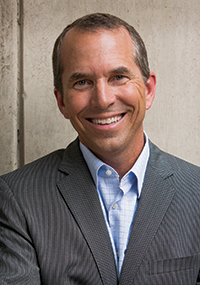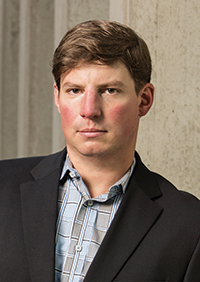They’re a boon for portfolio managers, but a hassle for buyside trading desks such as Cambiar Investors.
Separately managed accounts and unified managed accounts channel about $800 billion a year in retail funds to money managers. The suppliers are household names such as Merrill Lynch, Morgan Stanley and Wells Fargo. They beef up money managers’ assets under management, but they can be a headache for buyside traders who must deal with dozens of brokerage-sponsors and a myriad of trading and order management systems.
At Cambiar, a Denver-based midsize firm with $8 billion in equity assets under management, the desk must contend with trading for 5,000 separately managed accounts (SMAs) and unified managed accounts (UMAs) from 30 different sponsors, including Morgan Stanley, UBS and Merrill Lynch.
“We have such a wide spectrum of retail platforms, to trade on it requires a couple of extra traders,” says Rod Hostetler, Cambiar’s head trader. “If it was all institutional money, we could get by with two to three traders.” About 65 percent of assets under management are institutional and the rest retail.
It takes three and a half traders to help trade the retail accounts, Hostetler added.

Hostetler has been with Cambiar since 2000 and part of the industry for 17 years. Before joining Cambiar, he served as operations manager for the investment management group at Qwest Communications, assisting portfolio managers in trade execution, portfolio accounting and performance reporting.
At Cambiar, Hostetler handles U.S. equities trading for institutional customers and the firm’s mutual funds. Vice president of trading Christian Hiles backs him up and handles some retail accounts. Another trader handles ADRs and international stocks, as well as some retail. Two other traders focus solely on the firm’s retail accounts.
Those retail accounts include SMAs, which are traditional brokerage wrap accounts where the broker sponsors charge investors fees of approximately 1 percent of assets under management and outsource the investing to money mangers like Cambiar. UMAs, currently a more popular product, consolidate holdings including funds, ETFs and individual securities. They are often discretionary programs where investors authorize their advisor or firm to make the investing decisions. Fees are based on assets under management.
For retail investors, these products are similar to mutual funds but different. The main difference is that the mutual fund investor owns shares of a company that in turn owns other investments. An SMA investor owns the assets directly in his own name. That has tax advantages.
Separately managed accounts date to 1974, when they were introduced by E.F. Hutton. They took off in the 1990s as the major wirehouses introduced “wrap” accounts to compete with financial planners. They are typically lumped in with other “managed solutions,” which total about $2.5 trillion in assets. These funds are still overshadowed by the mutual fund industry, which holds about $11 trillion in assets.
Cambiar uses multiple proprietary software systems to implement the firm’s strategies with the various sponsors of the retail products, as well as systems provided by third parties including Fiserv and Vestmark, Natixis, Parametric, Placemark and Advent’s MOXY OMS, says Hiles.
Cycling through
All the institutional and retail accounts are managed by the portfolio managers as part of one of Cambiar’s seven strategies, which include: large-cap U.S. equities; small- and mid-cap equities; ADRs; international; aggressive value; global; and small-cap international, which is currently in incubation.

At Cambiar, the trading process often works like this: If the desk has gotten the word to work an order to a 2 percent position firmwide, Hostetler will work the institutional order and maybe get halfway done to 1 percent. Then the desk will cycle one by one through the retail product sponsors. The trader handling UBS might go first, then Morgan Stanley, etc.
“We try to keep the rotation equitable and fair and completely randomized,” said Hiles, who has been with Cambiar for nine years and was hired to trade the retail accounts. He was previously a trader with brokers Tucker Anthony Cleary Gull.
See Chart: Totally Electronic
The degree to which the trading desk gets involved with the retail accounts depends to a large extent on whether the orders emanate from an SMA or UMA. For the SMA accounts, Cambiar trades the account itself through the sponsor’s desk via proprietary or third-party software.
For UMA accounts, Cambiar routes the orders to the broker-sponsor. A clerk on the sponsor’s trading desk processes the trade and executes it on their end, Hostetler explained. With UMAs, Cambiar’s buy and sell decisions are delivered through portals, the sponsor’s third-party software or encrypted email.
Some UMAs allow Cambiar to communicate instructions about how the firm would like the order executed, but for others Cambiar only delivers the buy and sell information and asks that the sponsor let the firm know when it is in and out of the market on the trade, says Hostetler. “This process has improved somewhat since the early stages of UMAs a few years ago, where after delivering the [buy and sell instructions] to the sponsor’s administrator, most would not report to us when the trade was active,” he said.
Throughout the rotation process at Cambiar, the traders are in close communication with each other. “It’s cumbersome, but I think we’ve got it fine-tuned with good communication between our traders, analysts and portfolio managers,” said Hostetler.
Maintaining relationships
Describing how the firm handles the retail accounts, Hiles explains that each trader is responsible for different relationships with sponsors. “Maybe someone will have UBS and someone will have Merrill Lynch and then [those sponsors] have different technologies. So it’s impossible for one or a couple of people to do it. Being a midlevel-size firm, we do all this at our own desks. A larger firm might farm it out. Our firm directly executes and fills the orders and maintains the relationships itself.”
Said Hiles, “Institutional stuff is much easier. You have more control of the order because you are dealing with a centralized party. You’re either working the order on your desk or sending to a sales trader or single point of contact. Or a little bit of both. For the retail trading a lot of different counterparties, and coordinating all the different counterparties can be a challenge.”
Trading authority
The model for retail accounts has changed in recent years, shifting from SMAs to products such as UMAs following a move by Merrill Lynch several years ago, says Alois Pirker, director of Aite Group’s wealth management practice. That in turn led to a removal of trading authority from money managers and trading instead being handled centrally by the sponsor, Pirker said.
The model was adopted by other sponsors, and those sponsors cut the fee to the asset manager by as much as 15 basis points because the asset managers were no longer doing the trading, Pirker said.
The new arrangement makes it possible for sponsors to better customize client portfolios, Pirker said. For instance, a client may own a lot of IBM stock and give instructions that he or she doesn’t want to buy any more if a money manager makes that decision, he said. Or a client may want to avoid so-called “sin stocks.” Or a client may want his or her portfolio optimized to avoid added taxes, Pirker said.
When the sponsor gets the trading instructions from the asset manager, such as “Buy stock XYZ to 2 percent of the portfolio” or “Sell ABC stock to zero,” the sponsor feeds the sponsor and client restrictions and holdings, as well as the trading instructions into a black box that produces optimized trading instructions, Pirker said.
Hostetler acknowledged that the fees for UMAs are lower than those for SMAs. The fee varies depending on the product, “but overall, it can be as much as a 15 basis point difference,” he said.
Institutional trading
At Cambiar, the work is comparatively easier on the institutional side. The desk has fewer systems to worry about and more latitude about how it trades.
The portfolio managers often give the traders a fair amount of discretion in executing trades, says Hiles. That’s because the traders work very closely with the PMs to understand what they are thinking. “When an order comes up, we try to get an understanding of the PM’s objective as far as what’s an ideal entry price, what sort of timing they would like, what’s upcoming and what their expectations for us are,” he said. For their part, the traders provide color and opinions, he says.
“We’re not strictly benchmarked. We get a lot of discretion for trading in how we work the orders. We have a better understanding than a typical trading desk of why we are buying x and selling y,” he said.
“It’s more qualitative than quantitative here,” Hiles said.
(c) 2013 Traders Magazine and SourceMedia, Inc. All Rights Reserved.
http://www.tradersmagazine.com http://www.sourcemedia.com/



